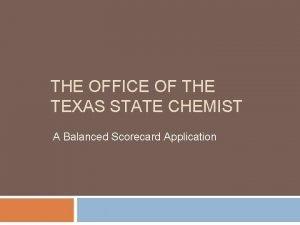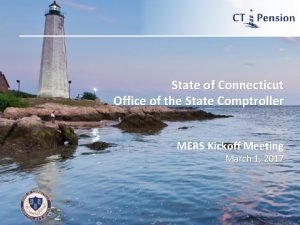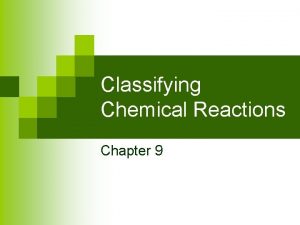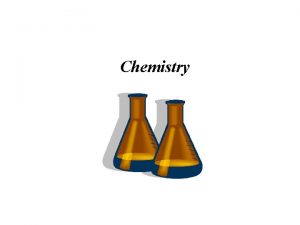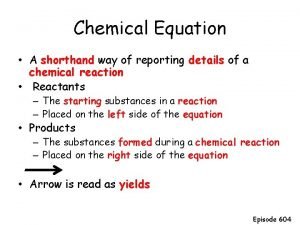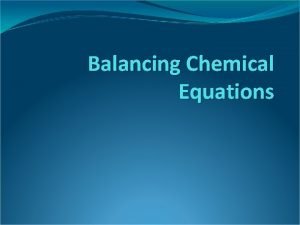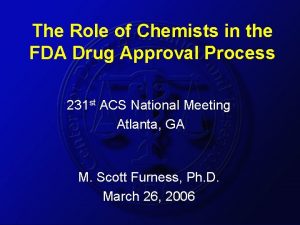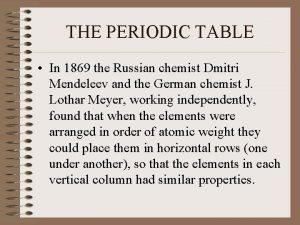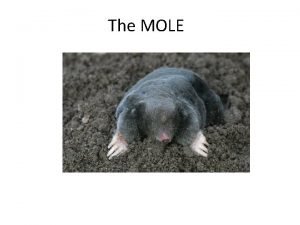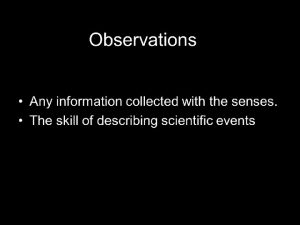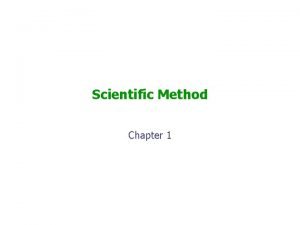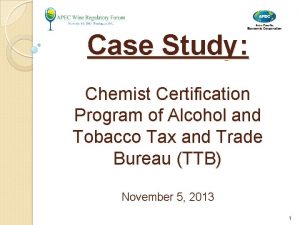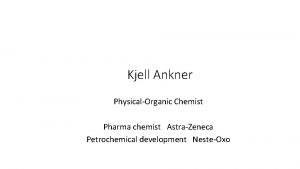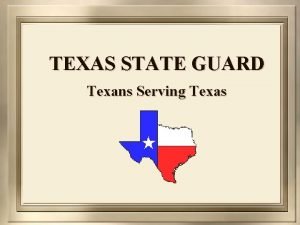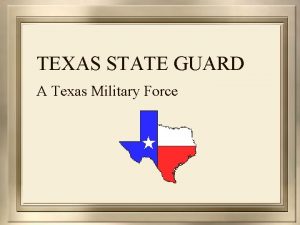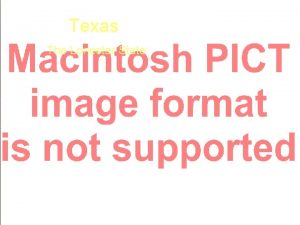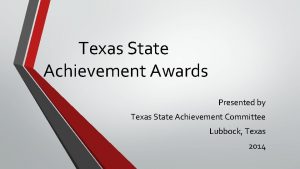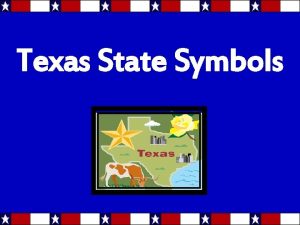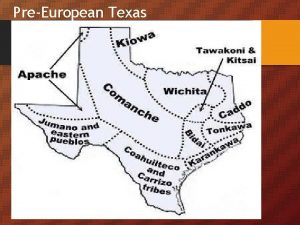THE OFFICE OF THE TEXAS STATE CHEMIST A














- Slides: 14

THE OFFICE OF THE TEXAS STATE CHEMIST A Balanced Scorecard Application

OUTLINE The OTSC Story Executive Summary Building the Balanced Scorecard Perspective Definitions Strategy Mapping Objective Definitions Measure Details Conclusions

TELLING the OTSC STORY Mission To protect consumers and enhance agribusiness through its feed and fertilizer regulatory compliance program, surveillance and monitoring of animal-human health and environmental hazards, and preparedness planning. Regulates 20 million tons of feed & fertilizer distributed in TX $6 billion industry with 4000 licensed firms in the US & abroad

TELLING the OTSC STORY 51 employees Feed & Fertilizer Control Service: 14 field investigators, Customer Service, IT, Accounting Agricultural Analytical Service: 21 lab technicians & researchers, Lab Manager Advisory & Executive Committee 16 members of private companies & associations Annual Budget Review

TELLING the OTSC STORY Sample Collected Information Entered Manager Approval Results Sent to Manufacture Goal: 48 hrs r post-analysis Results online after analysis Sample Shipped Technician Assigned Sample Prepped Lab Analysis Goal: 5 -10 days Current: 6 -13. 5 days Manager Approval

EXECUTIVE SUMMARY FOR OTSC Mission Clarification Shared understanding of overall organizational goals Alignment of departmental goals Focused Strategic Plan Use of strategy map Proactive Goal Setting

BUILDING the BALANCED SCORECARD Overview The Balanced Scorecard is a management tool used to describe the organization and translate its strategy into actionable performance measures that help the organization achieve the mission*. The Balanced Scorecard has 5 perspectives: Mission, Customer Focus, Internal Processes, Knowledge & Data and Financial. The organization develops objectives within each perspective. *Poister, Theodore H. & Gregory Streib. 2005. Elements of Strategic Planning and Management in Municipal Government: Status after Two Decades. Public Administration Review 65 (1): 45 -56.

BUILDING the BALANCED SCORECARD The Balanced Scorecard describes cause & effect relationships. MISSION CUSTOMER FOCUS INTERNAL PROCESSE S KNOWLED GE & DATA Management can figure things out & take action. FINANCIAL

STRATEGY MAPPING A strategy map provides a logical, comprehensive, and simple way of communicating organizational strategy to all employees and any advisory board. Process helps develop objectives within the 5 perspectives and shows the cause & effect relationships.

STRATEGY MAPPING Mission Custome r Focus Internal Processes Enforce compliance measures to protect consumers Provide accurate and timey lab results to customers Increase efficiency in the samples testing process Knowledge & Data Increase skilled & qualified lab employees Financia l Increase grants and contracts' revenue To protect consumers and enhance agribusiness through its feed and fertilizer regulatory compliance program, surveillance and monitoring of animal-human health and environmental hazards, and preparedness planning.

INTERNAL PROCESS OBJECTIVE Increase efficiency in sample testing process. � Integrate activities of each group � Conduct a workflow process analysis

INTERNAL PROCESS MEASURE Measure: Average number of days between the day the prep lab receives the samples and the results for routine violative samples are sent out to customers. Target: ≤ 12 days. Who: The Director. How: computer Average computing based on data entered by field staff in system (ALFRIMS) When: Quarterly data gathering from ALFRIMS’ time tracker system by Associate Director. Reviewed by Director who will share results with the organization quarterly. Actual: Data not tracked. Performance Ranges for Actual Results: Green: ≤ 12 days Amber: 13 to 15 days Red: ≥ 16 days

CONCLUSION Mission Clarification (staff & advisory board) Balanced scorecard & Strategy Map Goal Setting Team Leaders Proactive Lab Manager Increase communication between departments

Ghana Food & Drugs Board Visit Goals: Whether/how policies are implemented and the impact at the ground level Assess structure of Ghanaian feed industry & their needs Possible opportunities for collaboration in educational outreach in feed science & research
 Texas state chemist
Texas state chemist Office of the state comptroller ct
Office of the state comptroller ct Joanne supervised 36 professionals in 6 city libraries
Joanne supervised 36 professionals in 6 city libraries Chemist shorthand way of representing chemical reaction
Chemist shorthand way of representing chemical reaction Alchemy chemistry
Alchemy chemistry A chemist shorthand
A chemist shorthand A chemist shorthand way of presenting chemical reaction
A chemist shorthand way of presenting chemical reaction Fda chemist
Fda chemist Russian chemist periodic table
Russian chemist periodic table Representative particle
Representative particle Personal identification
Personal identification Valentin ross forensic science
Valentin ross forensic science A chemist in an imaginary universe
A chemist in an imaginary universe Ttb certified chemist
Ttb certified chemist Aerospace propulsion salary
Aerospace propulsion salary
